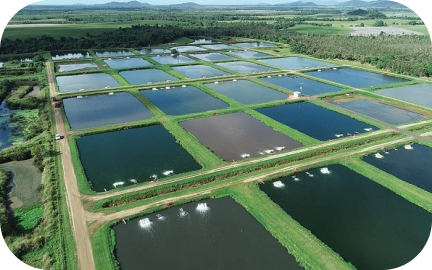How to Raise Artemia?
If you never feed your shrimp with Artemia, it is time to consider this type of food because of the great nutritious value. You can even raise your shrimp and its food at the same time to save cost. This article will provide you detailed instructions to help you raise Artemia by yourself.
Artemia is well-known for its unique structure and high adaptable capabilities. Artemia has very high commercial value, aquaculture farmers should consider this creature due to the great value it brings to you. To save cost, you can raise Artemia at home if you have space. In this article, we will provide instructions to help you raise Artemia by yourself.
What is Artemia?
Artemia is a species in saltwater lakes, far from the ocean. In particular, their eggs are cysts that can survive time, temperature, and extreme humidity. Another name of Artemia is brine shrimp.
Artemia includes 31-71% protein, 12-30% lipid, 11-23% carbohydrate, and 4-21% ash. This is the ideal ratio for shrimp food. The chitin shell contains a rich source of fiber equivalent to the fiber a human body requires.
Artemia nauplii are high in fat, so it is an excellent food for shrimp, fish, or other sea creatures.
Things to prepare
Light
Artemia is attracted to light. Thus, a light source is used to gather and collect Artemia nauplii (the baby Artemia). It is said that a light bulb or flashlight can do the trick as a clamp lamp for another setup
You can consider fluorescent or incandescent bulbs that come with most aquarium hoods, which are designed for typical use.
Salt
Marine or aquarium salt is suggested if you want to raise Artemia by yourself. These types of salt contain the proper level of minerals for Artemia. Depending on the size of your tank, you can adjust the amount of salt added. The ideal salt proportion is over 30%. Artemia cannot survive for too long if the percentage of salt in the tank is less than 30%. The ideal ratio is 50-80g of salt per water litre.
Aerator
For your tank, you had better choose aeration stones up to 10 gallons as it is ideal for Artemia to breathe.
Brine Shrimp Eggs/ Artemia Eggs
Eggs as a source for new Artemia as they will hatch, and you have a new flock of Artemia. Usually, set the temperature of the hatching tank between 60 to 75 Fahrenheit. After 36 days, Artemia eggs hatch.
Unused eggs should be kept in the fridge for later use. Another way is to keep them in a cool, dry, dark place for best results.
Tanks and Containers
Depending on the outcome you want to produce, you choose the suitable tank. The instructions on the internet often suggest you use the 5-10 gallon rearing aquarium. Nevertheless, you can quite use the smaller size if you want to produce/ raise a smaller amount of Artemia.
Should you want to raise Nauplii, you need several containers as Nauplii will reach adult size in 2-3 weeks.
The must-know Water Condition
Chemical/ Salt levels
Artemia eggs are very sensitive to the external environment. The suggested pH should be from 8.0-9.0. The lower pH will increase the appearance of Artemia babies.
If you want to defer the growth of Nauplii, you should add less salt. More salt will improve the hatching ratio because it can easily absorb the water and break through their shells. If you want to collect eggs, the ratio would be 80-100g of salt per water litre. If you want to collect Nauplii, the ratio would be 50-60g of salt per water litre.
In addition, remember to mix and follow up with an Aquarium Hydrometer to ensure the salinity is precise.
Frequency of Water Changing
Depending on the tank size and the density of Artemia, you can adjust the frequency of water changing. Normally, people change the water once or twice a week to grab all the unhatched eggs, baby corpses at the bottom.
Decapsulating Eggs
Eggs shells are indigestible and block the digestive system of the creature, which may cause danger. Creatures consuming Artemia eggshells may cope with deaths. Hence, you have to separate carefully between Naplii and unhatched eggs to avoid unhatched eggs hidden amongst Nauplii.
You can use a hypochlorite solution (household bleach 5%). Then, soak the number of eggs into the aeronstone liquid for 1 hour. When the eggs are hydrated, ready for hatching, add a second liter of household bleach and wait for 5-10 minutes, eggs turn from brown to bright orange colour. Scientists say that the orange colour implies that the embryos are free of their shells.
Feeding Artemia
Artemia babies (Nauplii) consume egg yolks. In addition, they also eat Spirulina powder, brewer’s yeast, fish meal, and soybean powder. Nauplii and adults eat the same kind of food. You do not have to cook food, just feed them with the raw mixture. Turn on the light to gather them, sprinkle food on the water surface. You feed them once in the morning and once in the evening. If the water is unclear, wait until it is crystalised again. As when you feed them with unclear water, Artemia will be suffocated. Because Artemia does not eat too much, you rather feed them less than making them overwhelmed. If Artemia gets too full, they are easier to die.
Harvesting
As their eggs are great source of lipid and fiber, farmers go the extra mile to collect their unhatched eggs. To harvest Artemia and Nauplii, place a light source in a convenient location and wait for 10- 20 minutes. Because Artemia is attracted to light, they will gather where the light comes from. Then, you turn off the aeration, unhatched eggs will sink to the bottom and empty shells float to the top.
Conclusion
It is very easy to raise Artemia as you only need to prepare tanks, salt, some techniques of harvesting, and decapsulating Nauplii to eggs. We hope you find this information useful. Don’t forget to follow our page for more useful articles.
ARTEMIA VIET NAM
You may also enjoy







